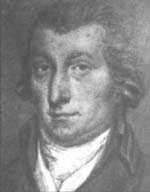The threat from the east
Forster had achieved only local success, largely because Carleton had not moved from Quebec. With the Americans gone, Carleton had turned his attention to internal security, forbidding those who had collaborated from entering Quebec without written permits. A commission toured the country around Trois Rivieres, mobilizing the militia, identifying those areas that had been least loyal, and focusing on the desire of most habitants to remain neutral. At the same time, Carleton went out of his way to behave humanely to his prisoners. The militia was ordered to search for stragglers, sick, and non-walking wounded who might either starve to death or suffer abuse from enraged habitants. Morgan and the other officers captured at Quebec were paroled, each receiving gold and a new shirt as he left for home.Others, such as MacLean, believed that softness and delay would allow the enemy to recover. Apart from the recapture of the Gaspé by the Royal Navy, and the arrival of the 29th and 47th Foot at Trois Rivieres, there was no offensive movement. Even when Carleton learned of Forster's victory at The Cedars, rather than head west, he returned to Quebec to greet Burgoyne, who had arrived on 1 June. However, Carleton's absence did leave MacLean in command at Trois Rivieres and the active Scot landed the troops and set up camp to await his superior's return.
Meanwhile, at Sorel, MajGen John Thomas had regrouped and met with the commissioners. However, on 21 May, he contracted smallpox and died on 2 June. The previous day, MajGen John Sullivan had arrived with over 5,000 reinforcements and now found himself in command. The commissioners, believing rumors that Carleton's reinforcements were just two regiments from Halifax, urged him to order the army back to Deschambault. Apart from a few zealots, such as Duggan, and the Canadians, the order was not well received until a report came in that MacLean, at Trois Rivieres, had only 300 men.8
On the afternoon of 6 June Sullivan sent Brigadier General William Thompson with 2,000 men, to investigate Trois Rivieres and attack MacLean if circumstances appeared favorable. The troops left Sorel by boat and landed opposite Nicolet. They crossed the river the following night and landed at Pointe du Lac, about seven miles (11km) west of Trois Rivieres, at 2.00am. Leaving 250 men to guard the boats, Thompson divided his troops into four regimental columns and a small reserve, and set out through the woods keeping out of sight of the river. Unfortunately, his guide, a local farmer, lost his way (deliberately or accidentally) and led the Americans into a swamp. Struggling out of the woods, Thompson's column found the Martin and several other vessels with their guns trained on the road and quickly fell back under a hail of grapeshot.
Meanwhile, the other columns had made better progress. Wayne's column emerged first, and drove back some light infantry and Indians. In the distance across a meadow he saw the church and monastery, but also Fraser's brigade maneuvering into line. As the other columns emerged there were increasingly heavy exchanges of musketry, until Fraser brought up two 6-pdrs rapidly unloaded from one of the transports. He swept the woods with canister at which the entire American brigade broke, pursued by the flank companies of the 9th, 20th, and 62nd Foot. Thompson tried to rally as many men as he could, but only 50 stood with him and he was quickly overrun.
With Thompson and Irvine captured and St Clair wounded, command fell on Wayne. Although it was his first time under fire, Wayne kept his head. He formed a rearguard of 800 men from various units and planned a charge into the town. The British anticipated the move and some Regulars marched out to meet him, until halted by the fire of
Irvine's riflemen. Wayne's men then came under fire from artillery in the defenses around the town and the vessels in the St Lawrence. Realizing that the planned assault was not feasible, he fell back into the woods and ordered one company after another to slip away, finally leaving 20 riflemen to cover the withdrawal.

